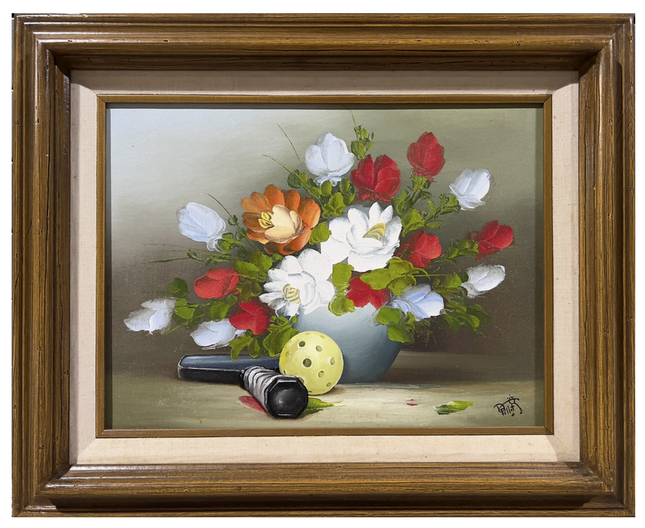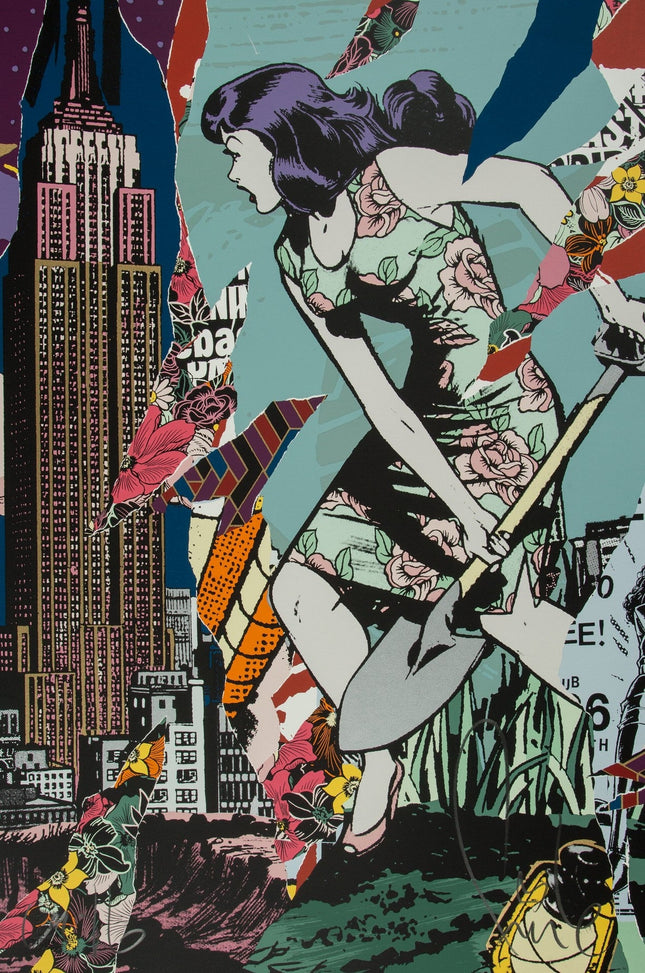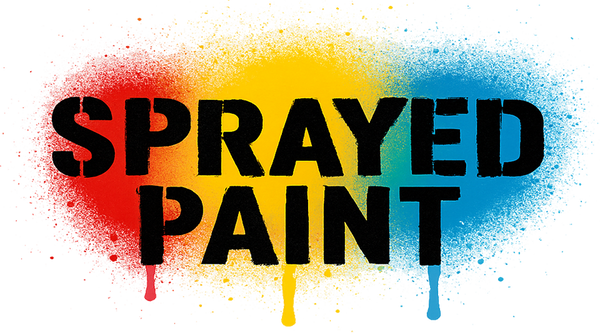
Flowers & Plants
-

Dave Pollot Non-Volley Zone II Original Acrylic Painting by Dave Pollot
Non-Volley Zone II Original Acrylic Painting by Dave Pollot One-of-a-kind Artwork on Vintage Canvas Framed by Street Art Pop Artist. 2022 Signed Acrylic on Original Pickleball Paddle Reclaimed Vintage Painting Size 23x18 Including Frame. Framed Ready To Hang In a unique blend of classical artistry and contemporary wit, "Non-Volley Zone II" emerges as a prime example of Dave Pollot's vision, where vintage aesthetics meet modern narratives. This original acrylic painting showcases Pollot's signature style of repurposing thrift art, introducing unexpected modern elements to otherwise traditional canvases. Created in 2022, this work features a charming still life that has been playfully disrupted by the addition of a pickleball paddle, a modern sports reference that Pollot has cleverly incorporated into the scene. At the heart of this piece is Pollot's mastery in combining two seemingly disparate worlds. The artist breathes new life into a reclaimed vintage painting by juxtaposing the timeless beauty of a floral arrangement with the unexpected intrusion of a pickleball paddle lying at the forefront, symbolizing perhaps the collision of past and present or the intrusion of the contemporary into the serene stillness of history. The playful inclusion of the paddle is a nod to his keen eye for pop culture references, making the artwork resonate with a sense of humor and relevance. The canvas size, at a notable 23x18 inches framed, allows viewers to immerse themselves in the textural contrasts and vivid colors that Pollot masterfully preserves and enhances. His work is not merely about altering the old. Still, it is a dialogue between the original artist and himself, creating a layered narrative where every brushstroke is a word in a story that spans generations. "Non-Volley Zone II" is more than just an acrylic painting; it is a one-of-a-kind artwork that showcases Pollot's ability to transform forgotten pieces of art into contemporary conversations. This framed piece, ready to hang, carries the hallmark of Pollot's ingenuity and serves as a testament to the evolving nature of art. Through such pieces, Pollot establishes himself not just within the realm of street and pop art but also as a custodian of the past, repurposing it to speak to the present.
$1,917.00 $1,629.00
-

Faile Bad Seeds Silkscreen Print by Faile
Bad Seeds- Savage Sacred Young Minds Series 25-Color Hand-Pulled Limited Edition Silkscreen Print on 310gsm Coventry Rag (Deckle Edge) by Faile Rare Street Art Famous Pop Artwork Artist. FAILE (American, est. 1999) Title: Bad Seeds, 2016 Medium: Screenprint on 100% Cotton Rag Archival Paper with Deckled Edges Savage Sacred Young Minds Series
$4,203.00



